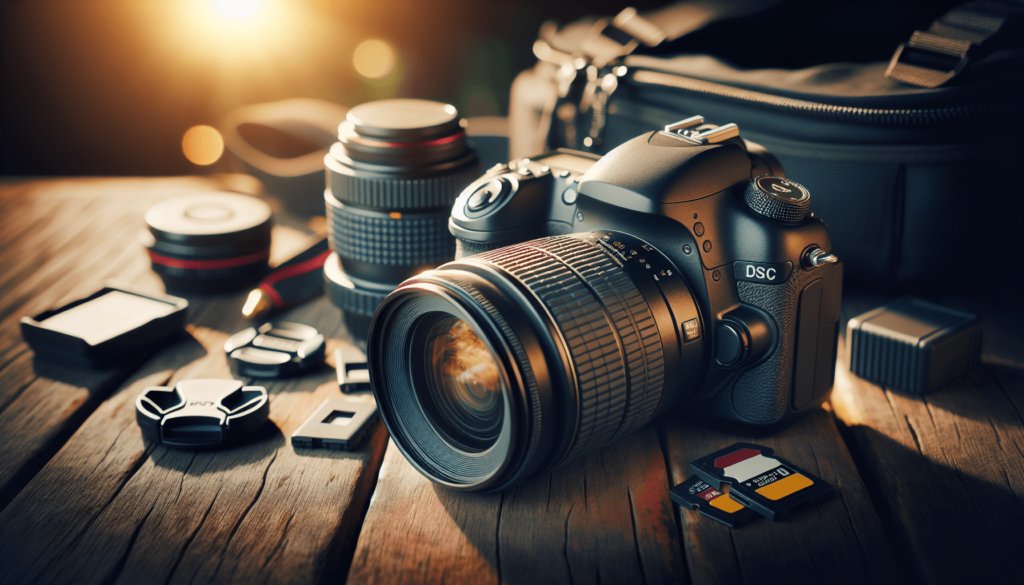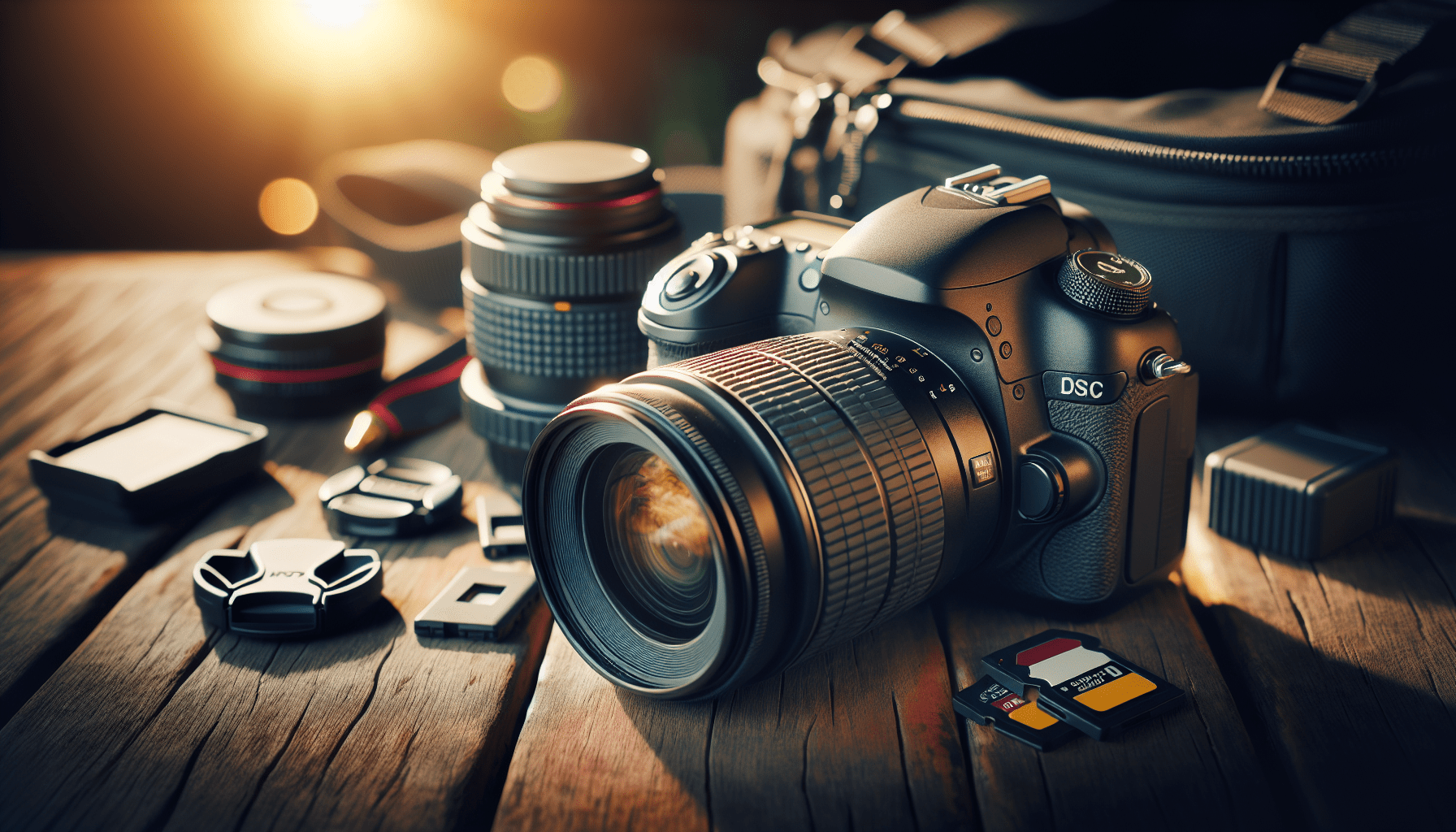Ever wonder how to score reliable camera gear without breaking the bank? Purchasing used cameras and lenses can be a fantastic way to expand your collection while saving money. This guide walks you through the essentials, from the benefits of buying pre-loved equipment to the best places to make your purchase.
You’ll learn the pros and cons, how to communicate effectively with sellers, and tips for ensuring safe transactions. Whether you’re using local marketplaces like Craigslist or opting for reputable retailers, this guide will provide the insights needed to make informed decisions and avoid common pitfalls.
Pros of Buying Used Gear
When you delve into the world of used gear, the benefits can be numerous and enticing.
Significant Cost Savings Compared to New Gear
The most obvious advantage is the financial savings. buying used gear often means you can get high-quality products at a fraction of the price of new ones. This can be especially beneficial if you’re on a tight budget or looking to invest in multiple pieces of equipment at once.
Potentially Acquiring Barely Used, Almost New Products
Another great aspect of buying used is that you might stumble upon items that have seen very little use. Many people purchase equipment only to realize they don’t use it as much as anticipated, and then resell it. This means you can often find gear that is in almost-new condition but at a discounted price.
Quick Accumulation of a Collection for Newcomers or Those Transitioning to New Systems
For newcomers to photography or those transitioning to new systems, buying used gear can be a quick way to build up a comprehensive collection. Instead of slowly purchasing new gear piece by piece due to budget constraints, you can buy multiple used items all at once without breaking the bank.
Availability of Multiple Iterations and Discontinued Models at Better Prices
Used markets are a treasure trove of older iterations and discontinued models. Many of these older models are still top-notch and provide excellent performance. Plus, they are usually available at significantly reduced prices compared to the latest versions. This way, you can have a broader choice of items to fit your specific needs and budget.
Cons of Buying Used Gear
While there are great benefits to buying used gear, there are also a few drawbacks to keep in mind.
Lack of Manufacturer’s Warranty
One of the primary cons is the absence of a manufacturer’s warranty. Typically, warranties are only valid for the original purchaser within a certain timeframe. When you buy used gear, that safety net is no longer available. This means if the gear malfunctions, you will have to cover the repair costs out of pocket.
More Effort Required from the Buyer for Proper Research and Inspection
Buying used gear requires additional diligence on your part. You need to conduct thorough research and close inspections to ensure that the gear is in good condition and functions as expected. This can be time-consuming and requires a certain level of knowledge about what to look for in terms of potential issues and defects.

This image is property of i.ytimg.com.
Where to Buy Used Gear
Having a reliable source is crucial when buying used gear. Here are some recommended places where you can find quality used equipment.
Reputable Stores Like Best Buy, B&H, Adorama, and Amazon Warehouse – Which Offer Return Policies
Reputable stores such as Best Buy, B&H, Adorama, and Amazon Warehouse have sections specifically dedicated to used and open-box products. These stores are trustworthy and often include a return policy, providing some level of buyer protection. Always check their return policies before purchasing to understand the terms and conditions.
eBay – Offers Buyer Protection and Feedback Systems
eBay is a popular platform for buying used gear. It offers a buyer protection program and a robust feedback system. The buyer protection ensures that you get your money back if the product is not as described. Additionally, you can check seller ratings and reviews to gauge the reliability of the seller before making a purchase.
Local Transactions Through Craigslist, Facebook Marketplace – Emphasizes Taking Safety Precautions and Meeting in Open, Well-Lit Areas
Craigslist and Facebook Marketplace are excellent options for finding local deals. These platforms allow you to see and test the gear in person before making a purchase. However, it’s essential to emphasize safety. Always meet in open, well-lit public areas, preferably during the day. Bringing a friend along can add an extra layer of security.
Buying from Local Marketplaces
If you prefer to buy from local marketplaces such as Craigslist, Facebook Marketplace, or Offer Up, here are some detailed tips to ensure smooth transactions.
Tips for Using Craigslist
Craigslist can be an excellent source for finding local deals, but it requires caution. Always ensure to read the listing description carefully and scrutinize the provided photos. When messaging the seller, be polite but firm in your inquiries about the condition and history of the item. Arrange to meet in public places, and don’t hesitate to bring a friend along for added safety.
Using Facebook Marketplace Effectively
Facebook Marketplace has grown in popularity, thanks to its ease of use and vast user base. On Facebook Marketplace, you can see the seller’s profile, which can add a layer of trust. Use the messaging system to ask for additional information and photos of the gear. Never rush into a deal; take your time to verify the seller’s authenticity and the product’s condition.
Considerations for Offer Up
Offer Up combines the convenience of an app with the functionality of a local marketplace. It allows for secure messaging within the app, which can be a safer alternative to sharing personal information. When using Offer Up, always check the seller’s ratings and reviews. Just like with Craigslist and Facebook Marketplace, prioritize meeting in safe, public places.

Proper Communication with Sellers
Effective communication with the seller is key to a smooth buying experience.
Be Clear and Specific About the Item You’re Interested In
When you reach out to a seller, be clear and specific about the item you’re interested in. Mention the exact model, condition, and any additional accessories you expect. This helps to avoid any misunderstandings and ensures you both are on the same page.
Ask for Detailed Photos and Information
Requesting detailed photos and information about the gear is crucial. Ask for photos from multiple angles and close-ups of critical components like the lens, sensor, and screen. Additionally, inquire about the item’s age, usage history, and any known issues or repairs.
Arrange Safe and Convenient Meet-Up Locations
Safety should always be your priority when arranging meet-ups. Choose well-lit, public locations like coffee shops or police station parking lots. Be upfront about your preferences and never agree to meet in secluded areas. It’s also a good idea to bring a friend along for added security.
Payment Methods
Choosing the right payment method is essential to ensure a safe transaction.
Safe Payment Options Like Cash, Venmo, and PayPal
Cash is often the simplest and safest method for local transactions. However, if you prefer digital payments, consider using Venmo or PayPal. These platforms offer a degree of buyer protection and make it easier to contest fraudulent charges.
Avoiding Risky Transactions
Avoid risky payment methods like wire transfers or cashier’s checks, as they are harder to trace and contest. If a seller insists on using such methods, it could be a red flag.
Utilizing PayPal’s Buyer Protection
If you decide to use PayPal, take advantage of its buyer protection program. Ensure you select the option for goods and services, not friends and family. This offers coverage if the item is not as described or fails to arrive. Always document your interaction with the seller, including item descriptions and agreed terms.
Additional Safety during COVID-19
In these uncertain times, extra precautions are necessary for in-person exchanges.
Wear Masks and Gloves During Meet-Ups
During the meet-up, wear a mask and gloves to minimize the risk of virus transmission. Respect social distancing guidelines and ensure you and the seller are comfortable with the arrangements.
Sanitize Camera Gear After Purchase with Alcohol Wipes (Avoiding Electronic Parts)
After purchasing the gear, thoroughly sanitize it with alcohol wipes. Be cautious not to use the wipes on electronic parts to avoid damage. Focus on non-electronic surfaces and handles.
Inspection Tips
Proper inspection is crucial to ensure you’re getting a quality product.
Check the Physical Condition for Wear and Tear, Drop, or Water Damage
Begin by examining the exterior for any signs of wear and tear, drop, or water damage. Check for dents, scratches, or discoloration that could indicate misuse or damage.
Inspect the LCD Screen, Lens Mount, and Check for Dead Pixels by Taking Sample Photos
Turn on the camera and inspect the LCD screen for any abnormalities. Check the lens mount for wear that could affect lens stability and performance. Take sample photos to check for dead pixels or other image quality issues.
Verify the Sensor Condition and the Camera’s Autofocus Responsiveness
Examine the sensor for dust, scratches, or other damage. Test the camera’s autofocus in various lighting conditions to ensure it is responsive and accurate.
Check the Shutter Count Online to Understand the Camera’s Usage
The shutter count gives insight into how extensively the camera has been used. You can check the shutter count online by uploading an image taken with the camera to specific websites. Compare the actual count with the typical lifespan of the camera model to gauge its remaining usability.
Inspection of Lenses
Lenses are another critical component to inspect thoroughly.
Check for Scratches, Dents, and Inspect the Glass on Both Ends
Examine both ends of the lens for scratches, dents, and other forms of damage. Hold the lens up to the light to inspect the glass elements for any imperfections.
Take Test Photos at High Aperture Values (f/16) to Spot Dust or Defects
Test the lens by taking photos at high aperture settings, like f/16. This helps to identify any dust or defects that may not be visible to the naked eye but can affect image quality.
Ensure the Autofocus Works and Listen for Unusual Motor Noises
Test the lens’s autofocus by focusing on different objects and distances. Listen for any unusual motor noises, which could indicate potential issues with the autofocus mechanism.
Final Advice
Here are some last tips to ensure you have a positive experience when buying used gear.
Use PayPal for Secure Transactions and Avoid Friends and Family Transactions to Ensure Buyer Protection
Always opt for PayPal’s goods and services option to ensure you’re covered by their buyer protection policy. Avoid using the friends and family option as it does not offer the same level of protection.
Don’t Feel Pressured to Buy; If Uncomfortable, Politely Decline
If, at any point, you feel uncomfortable or uncertain about the deal, don’t hesitate to walk away. It’s better to wait for another opportunity than risk getting stuck with defective gear or losing your money.
Encourages Community Sharing of Positive and Negative Experiences in Buying Used Gear to Inform Others
Sharing your experiences with the community can help others make informed decisions. Whether your experience was positive or negative, detailing it can be invaluable for others looking to buy used gear.
Buying used gear can be a fantastic way to save money and build your collection quickly. By taking the right precautions, conducting thorough inspections, and ensuring safe transactions, you can score some great deals and enjoy your new-to-you equipment with peace of mind!

